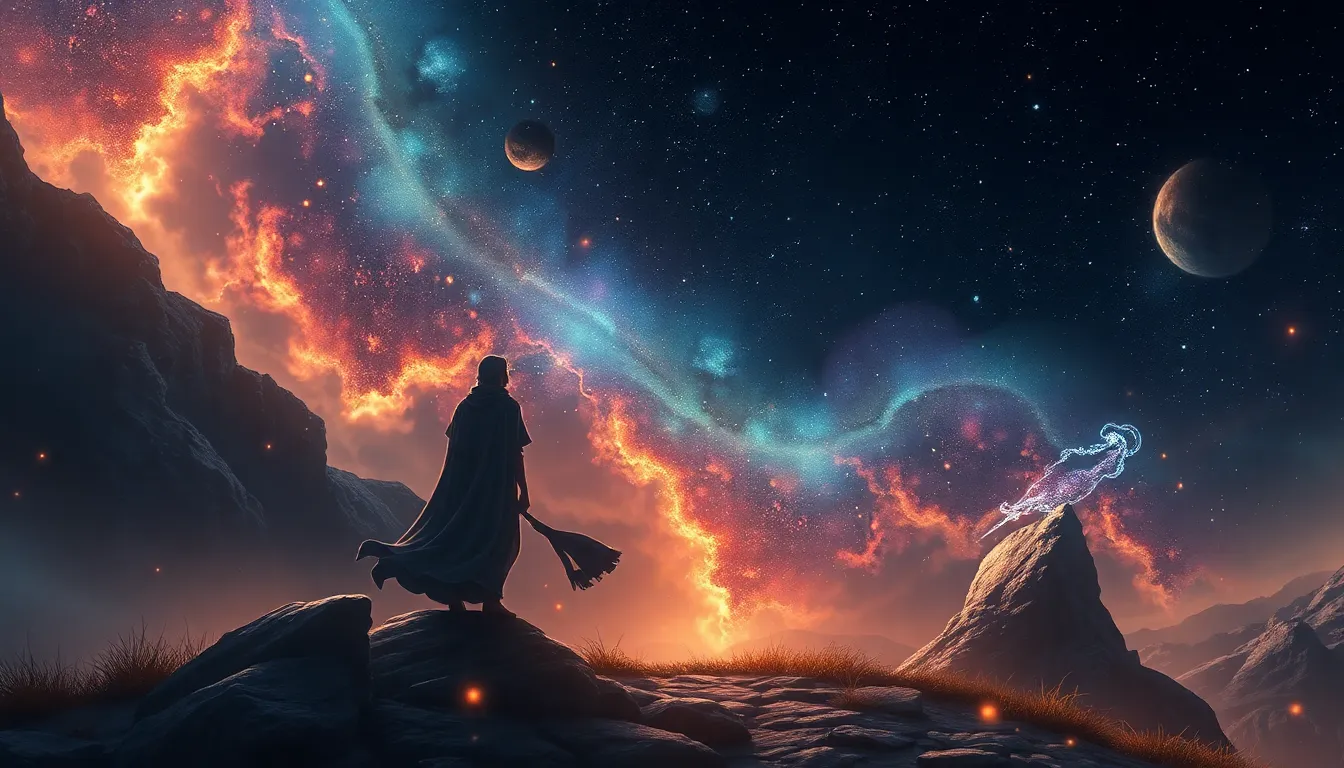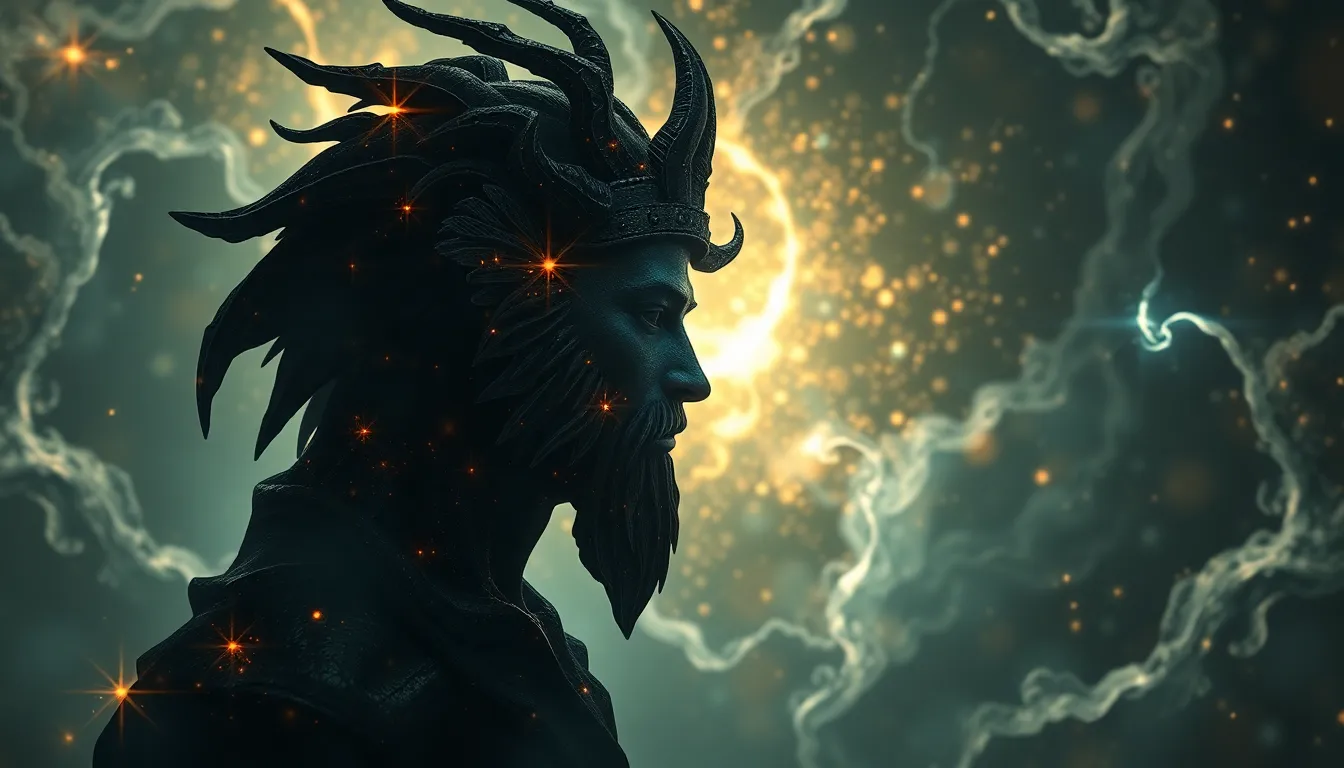The Journey of the Star-Crossed: Myths of Fate and Love
Introduction: The Allure of Star-Crossed Lovers
The term “star-crossed” originates from the belief that the stars and celestial bodies govern human destinies. In essence, it describes lovers whose paths are obstructed by fate, often leading to tragic outcomes. This concept has fascinated humanity for centuries, appearing in various forms throughout literature, folklore, and popular culture.
The allure of star-crossed lovers lies in their tumultuous relationships, which encapsulate the struggle between love and destiny. This theme resonates deeply with audiences, as it reflects the human experience of longing, sacrifice, and the often-painful reality of unfulfilled love. By examining the myths of star-crossed lovers, we gain insight into the complexities of fate and love that shape our lives.
Historical Origins of Star-Crossed Myths
The notion of fate has roots in ancient civilizations, including the Greeks and Romans, who viewed the cosmos as a determinant of human affairs. The Greeks, in particular, believed in the Moirai or Fates, three sisters who controlled the life thread of every individual.
One of the most significant literary references to star-crossed lovers is found in William Shakespeare’s “Romeo and Juliet,” where the protagonists are described as “star-crossed” from the outset. This play not only popularized the term but also highlighted the tragic consequences of love thwarted by external forces.
Over the centuries, the concept of star-crossed lovers has evolved, yet its core message remains the same: love can be both a powerful force and a source of suffering when intertwined with fate.
Fate vs. Free Will: The Philosophical Debate
The tension between fate and free will is a central theme in discussions surrounding love. Fate suggests that our lives are predetermined, while free will posits that individuals can shape their destinies through choices and actions.
- Fate: The idea that events are predetermined and beyond individual control.
- Free Will: The belief that individuals have the power to make choices that shape their futures.
Prominent philosophers, such as Aristotle and Nietzsche, have contributed to this debate. Aristotle emphasized the importance of rational choice in achieving happiness, while Nietzsche challenged the concept of fate, advocating for the affirmation of life through personal agency. This philosophical discourse significantly influences how people perceive romantic relationships, often leading to a belief in a predestined connection.
Cultural Variations of Star-Crossed Love
Star-crossed love transcends cultural boundaries, appearing in various forms across the globe. Different societies have unique narratives that explore the themes of love and destiny.
- East Asian Narratives: In Chinese culture, tales like “The Butterfly Lovers” depict lovers separated by societal constraints but fated to reunite.
- Middle Eastern Folklore: Stories such as “Layla and Majnun” illustrate the power of love amidst societal and familial opposition.
- Indigenous Legends: Many indigenous cultures tell stories of lovers whose spirits must navigate challenges imposed by the natural and supernatural worlds.
These narratives share common themes of love’s resilience against adversity while reflecting the cultural values that shape their interpretations of fate.
Literary Examples of Star-Crossed Lovers
Throughout literature, star-crossed lovers have captured the imagination of readers. Classic works such as “Wuthering Heights” and “The Fault in Our Stars” exemplify the tragic consequences of love intertwined with fate.
- “Wuthering Heights”: The tumultuous relationship between Heathcliff and Catherine Earnshaw showcases how love can lead to destruction when influenced by societal constraints.
- “The Fault in Our Stars”: This modern tale of two teenagers battling cancer explores the beauty and tragedy of love in the face of mortality.
Contemporary representations in films and media continue to expand on these themes, often highlighting the role of tragedy in star-crossed narratives as a means of exploring deeper human emotions.
The Role of Astrology and Destiny in Relationships
Astrology has long been associated with love, suggesting that celestial alignment can influence romantic compatibility. Many individuals turn to astrological readings to understand their relationships better.
Astrological beliefs often encompass notions of fate, with individuals viewing their connections through the lens of their zodiac signs. This can lead to a sense of destiny in romantic relationships, as people interpret astrological compatibility as a sign of preordained connection.
Personal anecdotes abound, with many sharing stories of how their relationships align with astrological predictions, further reinforcing the belief in a cosmic influence on love.
Psychological Perspectives on Love and Fate
Psychology offers valuable insights into the dynamics of love and the perception of fate. Attachment theory, for instance, explains how early relationships with caregivers influence romantic attachments later in life.
Moreover, the psychology behind the perception of fate in romantic relationships often stems from societal narratives that glorify the idea of “meant to be” connections. Such narratives can lead individuals to overlook red flags in relationships, believing that they are destined to be together.
Modern Interpretations of Star-Crossed Love
In contemporary society, the concept of destiny in love is viewed through various lenses, including technology and social media. Online dating platforms have transformed how people connect, often leading to relationships that feel serendipitous.
Additionally, social media allows individuals to share their “star-crossed” stories, often amplifying the romanticism associated with these narratives. Case studies abound of modern relationships that claim to be star-crossed, highlighting how contemporary interpretations continue to evolve.
The Impact of Star-Crossed Myths on Popular Culture
The influence of star-crossed narratives is pervasive in popular culture, inspiring countless films, songs, and works of art. From blockbuster movies to chart-topping songs, the theme of star-crossed love remains a favorite.
- Films: Movies like “Titanic” and “La La Land” explore the beauty and tragedy of love interrupted by fate.
- Songs: Numerous songs capture the essence of star-crossed love, often evoking deep emotional responses from listeners.
However, the commercialization of the star-crossed trope can dilute its original significance, leading to a commodified interpretation of love’s struggles and triumphs.
Conclusion
The journey of star-crossed lovers through history, literature, and culture reflects humanity’s enduring fascination with love and fate. By exploring these myths, we gain insight into our own experiences and the complexities of the human heart. Whether viewed through a philosophical, cultural, or psychological lens, the stories of star-crossed lovers continue to resonate, reminding us of the intricate dance between destiny and desire.
https://www.youtube.com/watch?v=ohGEGATpTVA


